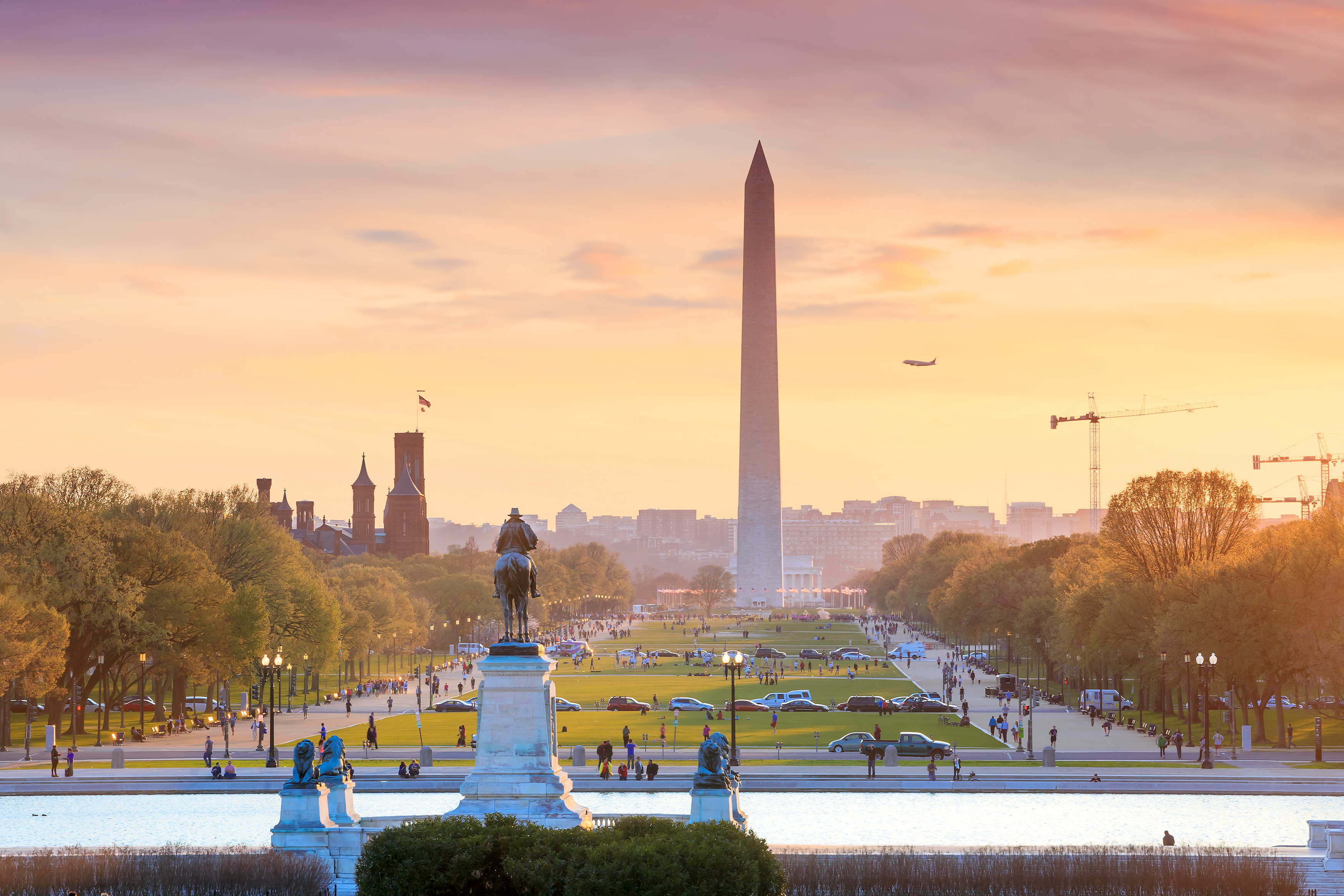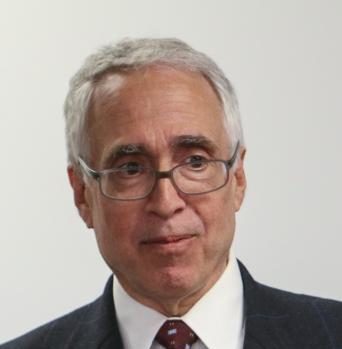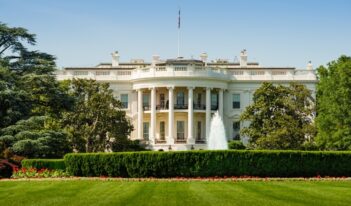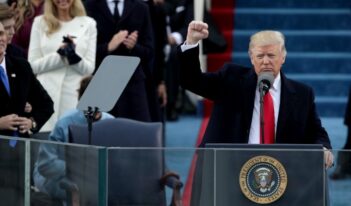
Distinguished lecture at Penn Law offers hope that the long shutdown of the federal government in early 2019 will lead to positive reforms.
Even as the longest government shutdown in U.S. history fades from memory, a cloud of uncertainty still hangs over the future public service. Battles continue over the access to the Mueller files, the budget process drifts toward bitter showdowns in coming fiscal years, and President Donald J. Trump continues to taunt federal employees with fear-mongering about the deep state, pay freezes, and attacks on the merit system.
Nevertheless, the shutdown that lasted from late December 2018 through late January 2019 may yet produce a push for long-needed reforms, in part because Americans were reminded of the vital functions that government performs. Although a Gallup Poll reported that public trust in government to handle both foreign and domestic problems dropped sharply during the shutdown, the crisis that emerged from the shutdown creates opportunities to insulate the public service from the polarization that has increased the risk of breakdowns across the federal government and to address public concerns about keeping the government open.
Americans do not blame federal employees for the shutdown. According to one poll, more than half of the public thinks President Trump and the Republicans were to blame, while 29 percent point to Democrats and 13 percent say both sides. Furthermore, support for federal employees appears to have risen as Americans embraced the need for a strong public service as a ballast against partisanship. According to an NPR poll at the height of the shutdown, half of Americans followed the story closely, two-fifths said they agreed that “it’s never okay to shut down the government,” and large majorities said the shutdown was embarrassing for the country, threatened the country and economy, and was unfair to federal employees and contractors. Trust in government and politicians was already low the day before the shutdown, but it fell sharply in the five days immediately after the House and Senate adjourned without a compromise in hand.
Americans learned a great deal about bitter partisanship during the shutdown, but they also received a real-time introduction to the state of the federal service. Some of the lessons were troubling and others heartening. The overall takeaway was a warning about the need to address what former Federal Reserve Board Chairman Paul A. Volcker and his National Commission on the Public Service thirty years ago called the “quiet crisis” in public service. The Commission did not know when the crisis would hit, but it never imagined that a partisan shutdown would bring the quiet crisis to a roar decades after it concluded its work. Yet this is what happened.
The government shutdown yields six important lessons that, if enough policymakers heed them, can lead to a productive path forward to address the quiet crisis.
First, the media put a human face on the shutdown and showed the nation what federal employees do to keep America going. Contrary to the caricature of overpaid and underworked federal employees often promoted in the President’s campaign rallies and Twitter feed, the federal workforce turned out to be composed of real people who clock in every day to make a difference for their communities and country. Americans saw the substantial effects of missed paychecks on people who are just like them. The shutdown produced iconic photos of furloughed employees standing in line at the food pantries, worrying about how to reconcile their checkbooks, and longing to get back to work.
Second, the media introduced the nation to the federal government’s blended workforce. The early shutdown coverage focused almost entirely on the 800,000 civil servants who were either called to work without pay or deemed “nonessential” and sent home for the duration. But the media eventually shifted the storyline to include the private and nonprofit sector employees who provide goods and services to the nation under federal contracts and grants. According to my late 2017 estimates of the true size of the federal workforce, the federal government employed about 7.2 million federal, contract, and grant employees at the start of the shutdown, of which 6 million worked for the nine departments that were directly affected by the shutdown. According to the White House Council of Economic Advisors, contract slowdowns accounted for about half of the shutdown’s economic impact, mostly because of a sharp decline in household spending on everything from food and transportation to home and automobile maintenance.
Third, Americans were reminded that the nation relies on a blended workforce for a host of benefits that keep them safe. They learned about threats to food and drug safety, slowdowns in aircraft inspections and tax refunds, a weakening of data security and workplace inspections, and even delays in FBI investigations and small business loans.
As I argued in mid-January, the President and Congress were paying too much attention to delayed tax refunds, missing paychecks, and the 2020 election, and not enough attention to the economic risks of a significant government breakdown. My research on the most visible government failures since 2001 shows that the shutdown was pulling many of the same triggers—e.g., weak leadership, inadequate resources—that contributed to the 9/11 terrorist attacks, the 2004 flu vaccine shortage, the 2007 Walter Reed veterans crisis, the 2012 Benghazi attacks, and last summer’s failed family-separation policy.
Americans have since learned that the shutdown might have contributed to the ongoing controversy surrounding the tragic crashes of two Boeing 737 MAX airplanes. The shutdown halted work on the 737 flight-control software fix following the first crash because it had not been designated as an “imminent concern.” But the beleaguered, under-funded Federal Aviation Administration (FAA) had also been operating for more than a year without a Senate-confirmed administrator, as have dozens of agencies and units scattered across government, further eroding public confidence. The Administration sets records every day in the number and duration of executive vacancies even as it speeds judicial appointments through the Senate.
Fourth, Americans have learned that the shutdown put their communities at risk, whether by slowing down the permitting process for big companies, delaying the small business loans that keep their communities growing, injecting uncertainty into government aid programs, or provoking layoffs in the local economies that depend on federal spending. The government shutdown not only affected federal workers but it made it hard to keep the cooks and waiters busy at the Bickering Sisters Café just down the street from the James V. Hansen Federal Building in Ogden, Utah, and to sustain the small businesses who work for the NASA Marshall Space Flight Center in Huntsville, Alabama.
Fifth, Americans learned that the shutdown was damaging federal employee morale while giving young Americans good reason to ask whether they want to assume the risks associated with a career in government. A Prudential Financial survey of 350 furloughed or unpaid federal workers and contractors showed that almost half of federal employees fell behind paying their bills, 27 percent missed a mortgage or rent payment, 13 percent missed a student loan payment, and 10 percent fell behind on tuition payments.
Contrary to President Trump’s widely-reported claim that many federal employees supported the shutdown and border-wall funding, a mid-January Government Executive survey found that 72 percent of federal employees opposed the shutdown, and 56 percent opposed the President’s proposal for border wall funding. “In the 37+ years I’ve been with the FAA, I’ve never been so humiliated and disgraced by our President and the members of Congress,” noted one employee at the Federal Aviation Administration. “To make us a pawn in personal power-plays and agendas is shameful and nothing short of illegal. I’d retire today if it were not for the retirement personnel being furloughed.”
Sixth, Americans learned that the federal government was also breaking its promise to young Americans who joined the public service at all levels of government. In 2017, the federal government created a Public Service Loan Forgiveness program as called for by the 2007 College Cost Reduction and Access Act. But instead of encouraging young people to enter public service, the program has received a wave of negative press coverage because of the Administration’s effort to subvert payments. According to a Wall Street Journal analysis, more than 73,000 borrowers had applied for debt forgiveness as of March 2019, but only 864 had been approved.
More importantly for future federal performance, the shutdown has provoked urgent questions about a “brain drain” across government, as retirement-eligible federal employees ask whether it is a good time to retire. Last year’s spike in federal retirement rates may yet turn out to be the early warning of a long-feared retirement tsunami that will overwhelm the federal government’s sluggish hiring process. The Government Accountability Office has been writing about the demographic vulnerability since 2001, and personnel specialists readily acknowledge that the retirement surge is no longer a question of “if” but of “how soon.” The question now is whether the shutdown will be what some call the “earthquake” that triggers the wave.
Together, these six lessons have arrived at a moment of great challenge as the federal government confronts the need to rebuild the public service as a career destination of choice for the Millennials and Generation Z. Luckily, the public service community has been thinking about this generational shift for decades and has the research and expertise to help Congress finally confront the quiet crisis—if it should choose to do so.
That leads to the one potential silver lining to the long shutdown at the start of 2019: it cast a spotlight on a once-in-a-generation chance to remake the federal service. The nation has never needed a dedicated public service more than today. The quiet crisis is now at hand, louder than ever before.
According to my most recent analysis, the percentage of Americans who favor very major government reform has risen from barely a third in 1997 to three-fifths today. Thus, support shows little variation across the political spectrum. Contemporary polarization has driven Americans into “red,” “blue,” and “purple” corners on issues such as immigration reform, health care access, and abortion rights, but it has not affected how many Americans understand the reality that the federal government does not work well.
It is difficult to know precisely what survey respondents mean when they endorse “very major reform.” It seems reasonable to assume that they want action on both the “how” and the “what” of government action—meaning, how government works and what it delivers by way of programs and benefits. Republicans tend to favor a smaller government that delivers fewer services, for example, while Democrats tend to favor a bigger government that delivers more. Either way, a competent, capable federal workforce is needed.
If candidates are clear in communicating their promises on the “what” of government action, the messaging behind the “how” is more diffuse. From my reading of trust-in-government survey data leading back to 1997, a “silver linings agenda” could include a mix of reforms to strengthen ethics in government, discipline the presidential appointments process, reduce campaign spending, improve fiscal efficiency and accountability, streamline the bureaucracy, and introduce a “dose of common sense”(as Philip K. Howard calls it) into the rulemaking process. Overarching these reforms, action will be needed to rebuild the civil service system to support the next generation of public servants.
Good government groups such as the Partnership for Public Service, Volcker Alliance, and National Academy of Public Administration are ready to embrace this mission, but the Trump Administration is an unsteady partner at best. Trump has never missed an opportunity to stoke fears of the “deep state” in government, promote public distrust toward government, or embrace a federal pay freeze or benefit cut.
Trump’s hostility to government makes the silver lining more difficult to see, but the nation is ready to engage when positive reformers take charge. The shutdown did more than prove that government is broken; it also showed how important government is to the nation’s future and why the public service needs help. The challenge is to take advantage of this silver lining and undertake the kind of broad reforms that are now long past due.
This essay is part of a five-part series, entitled What the Shutdown Revealed About the Value of Public Service.




